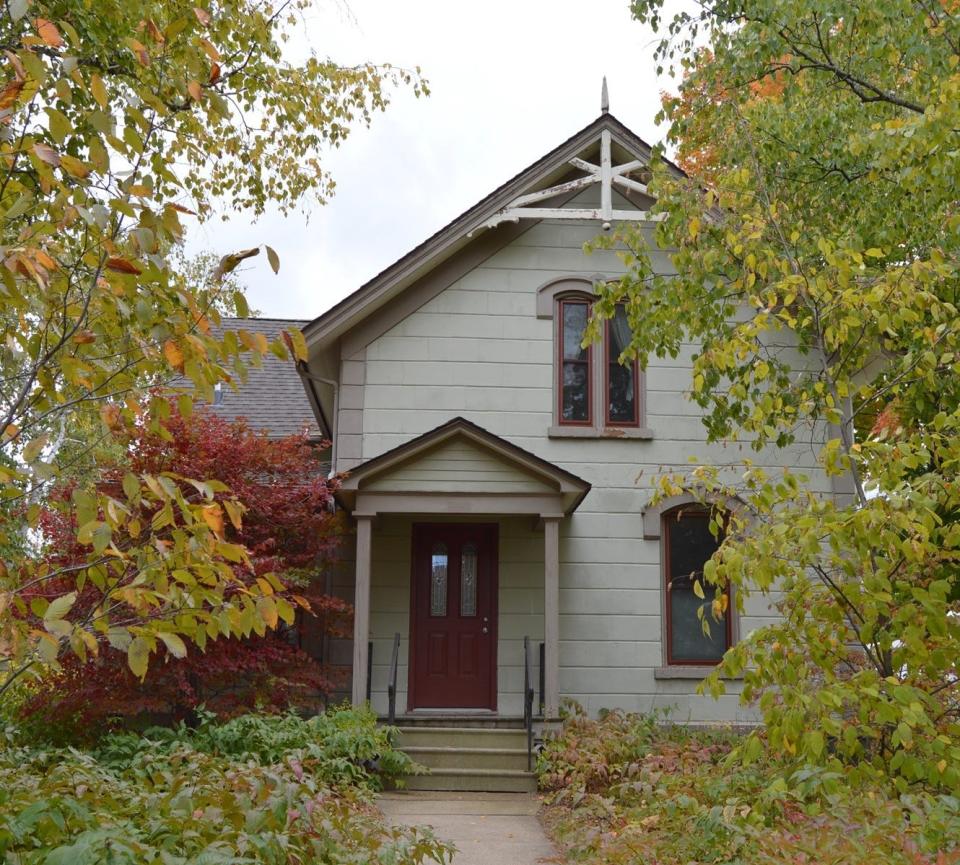Sturgeon Bay home built in 1881 is named to the Wisconsin State Register of Historic Places
STURGEON BAY - A 143-year-old house just off downtown that's most notable for the stone used to build it is now on the Wisconsin State Register of Historic Places.
It's the Dr. Joseph and Olivia Soper House at 23 N. Fifth Ave., Sturgeon Bay. The Wisconsin Historical Society announced Monday the residence was added to the state register.

The historical society said in a news release that the architectural significance of the Italianate-style residence built in 1881, along with its age, is that its exterior is clad in locally produced Frear artificial stone. On the society's webpage for the house, it says it is the only residential structure using this locally produced, short-lived building material that remains standing in the city, although a commercial building with Frear stone is at 40-44 North Third Avenue.
Frear artificial stone was an early form of concrete, cast from sand or gravel. George Frear of Chicago earned a patent for it in 1868, and it was promoted as an affordable alternative to natural stone, claiming advantages of being both strong and versatile with a wide range of color tones and a nearly infinite variety of molds into which it could be cast.
Frear Stone Manufacturing Co. was located in Chicago, but the cast stone used at the Soper House was manufactured in Sturgeon Bay by Giles Kirtland, a former superintendent at the Frear plant who purchased the rights to manufacture and sell the product locally. Frear stone was used at the Soper House for the block veneer, the drip course above the foundation, window sills and decorative hoods over the windows. The rear dormer windows and existing garage are later additions, but the basic mass of the building as built 143 years ago is intact.
Use of Frear stone was limited, and by the mid-1880s artificial stone was largely replaced by more modern forms of concrete, which the historical society said makes "Frear stone a short-lived but important chapter in the development of modern concrete construction."
Another detail – not necessarily relating to this building but in the same lot – is the casting in place of street names on a flat concrete slab at the inside corner of the Louisiana Street and Fifth Avenue sidewalks. Here, Church (now Fifth Avenue) and Cottage (now Louisiana) streets are visible. This detail can be found on many street corners within the older portions of the city and is of some urban design interest.
The Sopers sold the home in 1886 to George Spear, a partner in Merchants Exchange Bank (whose building itself, at 10 N. Third Ave., is on the state and national historic place registers). In the 20th century, the house was divided into two apartment units before serving as office space for a local nonprofit organization. As of last year, it is being restored to use as a single-family residence, according to the society.
The State Register is Wisconsin's official list of state properties determined to be significant to Wisconsin's heritage. The State Historic Preservation Office at the Wisconsin Historical Society administers both the State Register and National Register in Wisconsin. For more information, visit wisconsinhistory.org.
Contact Christopher Clough at 920-562-8900 or cclough@doorcountyadvocate.com.
MORE: Door County Housing Partnership makes new affordable homes happen for families
MORE: Looking for a Friday fish fry in Door County? We have your perch, whitefish, lawyer and more
FOR MORE DOOR COUNTY NEWS: Check out our website
This article originally appeared on Green Bay Press-Gazette: 143-year-old Door County home is named a Wisconsin historic place

